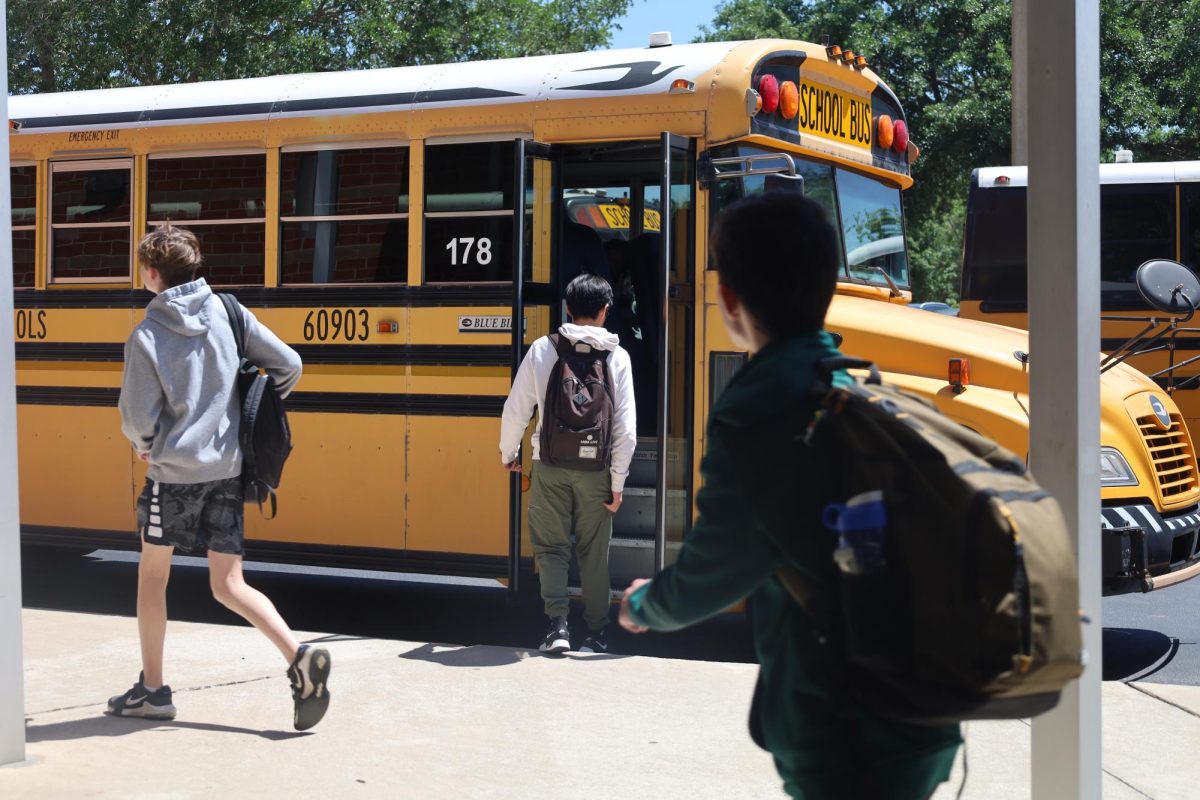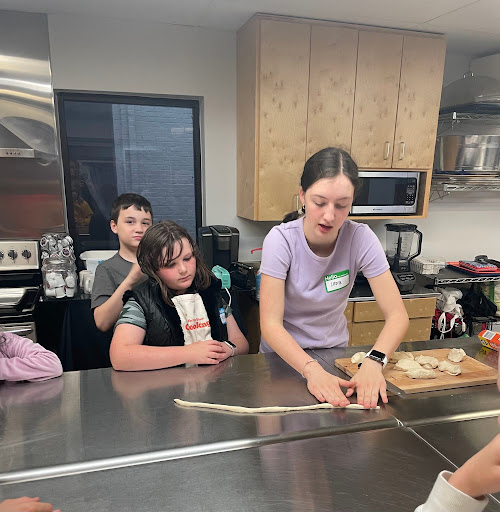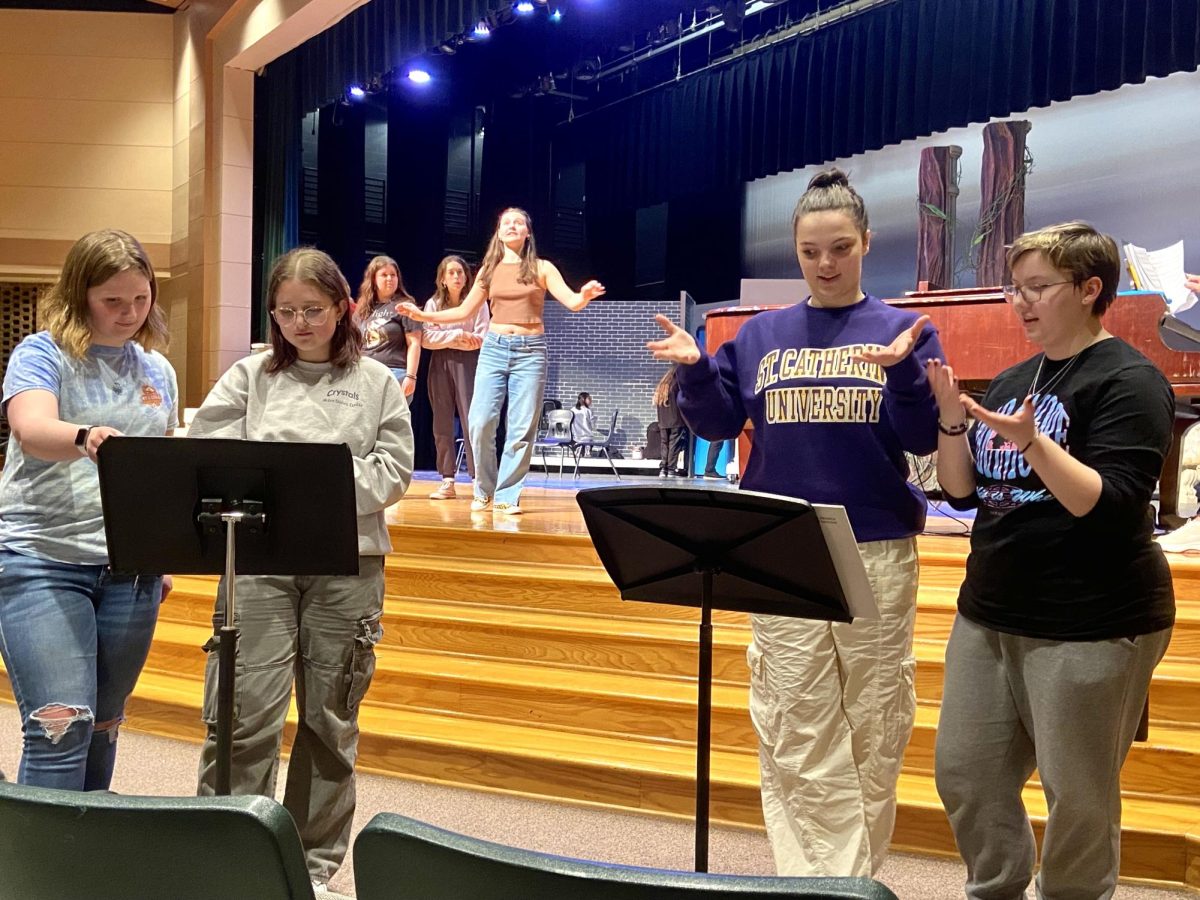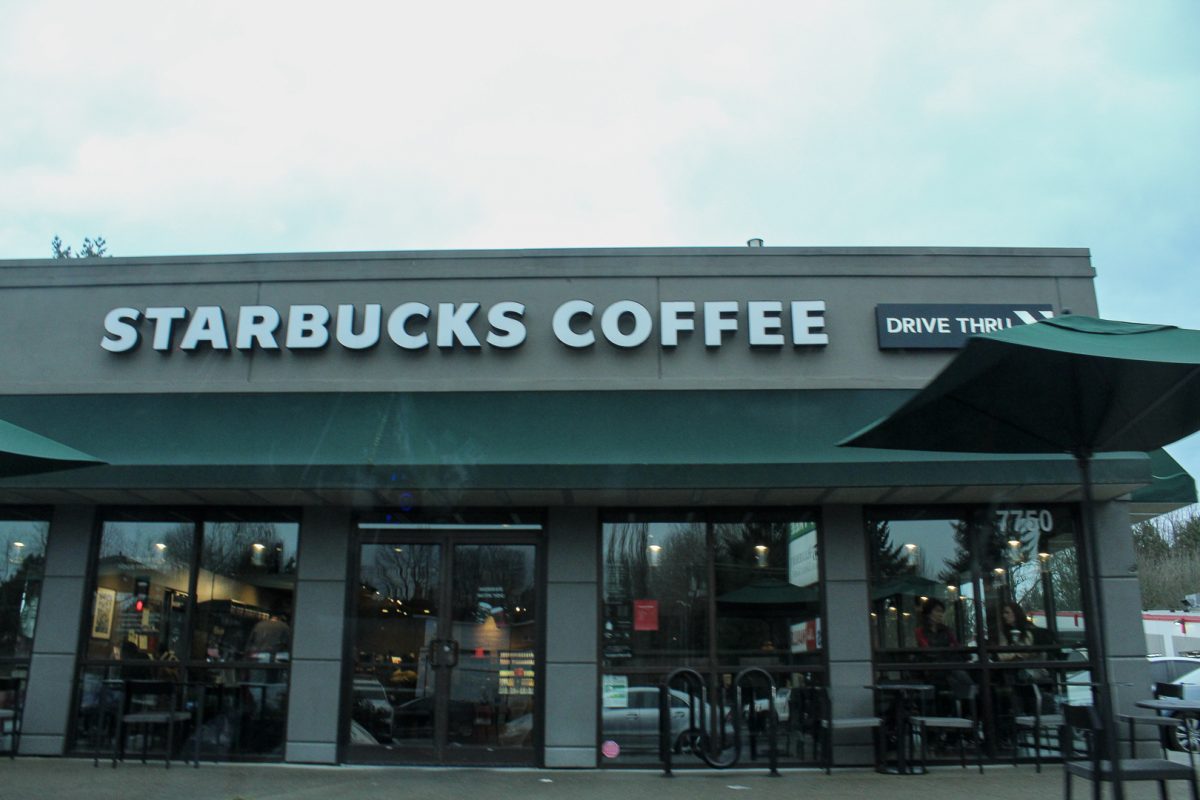On Nov. 16, Starbucks workers nationwide walked out of their stores in protest of working conditions during one of the busiest promotional events of the year: Red Cup Day. On Red Cup Day, customers can receive special holiday-themed cups if they order a seasonal drink. Red Cup Day is an important event for Starbucks annually, as this year’s date saw a 31.7% increase in customers compared to the daily average, according to data released by placer.ai, a company that tracks foot traffic. However, the day places an immense pressure on workers, since stores are often overwhelmed and understaffed.
Workers have walked out in the past on Red Cup Days, using the promotional event to highlight several issues. This year, a collective 5,000 workers at over 200 stores walked out, according to the New York Times, which is the largest of three walkouts on Red Cup Day since Starbucks workers unionized in 2021. Workers carried signs and chanted to bring awareness to issues with contract negotiations, scheduling and management.
“When the first Red Cup Day happened a couple of years ago now, I was a partner, I was working and it was the worst day I have ever worked at Starbucks. The company did not communicate to the workers, did not communicate even to the managers, the scale, the details of that event. And so it left us horribly understaffed and swamped and I think we’re feeling overrun. Through the years, they have gotten a little bit better about that, but really not great,” Lillian Kossak (she/they), a member of the Starbucks Workers United Union in Seattle, said.
Kossak closed her store the day of and before Red Cup Day to join the walkout. Because of the mass of customers, she felt the number of baristas scheduled could not work at a pace that ensured quality and speed. She said the first step to solving the staffing issue is adjusting the computer algorithm that determines baristas’ schedules. The algorithm’s calculations prioritize saving money, not the effort of workers. She thinks a human element must be added to the algorithm to better pay the baristas and value their work.
“Each of those stores walking out loses so much money in one day, and that’s what they care about. And so not only is it the day of, but our business drops a little bit for the next two weeks — just a rough time frame — after those strikes because people are going to local coffee shops, making stuff at home,” Kossak said.
Closing stores makes businesses suffer and signals to Starbucks executives that they need to make changes. Kossak said the decline in sales doesn’t threaten employee stability because Starbucks stores are so understaffed right now that they can’t afford to fire anyone. Senior Tate Kincaid (she/her), Starbucks barista, agreed with this sentiment.
“It’s really hard to keep a store manager. Actually, our store manager last night had quit, he was done. It’s really hard with scheduling; it’s inconsistent, but I can’t blame my store manager for it. Stuff happens, but I never know what I’m going to walk into. It’s a high pace job,” Kincaid said.
Starbucks has refused to negotiate contracts with the union for over seven months. The company said that it does not want to hold talks online, and laws regarding negotiations do not list online services like Zoom as a way to meet. However, negotiation meetings were held online over the pandemic.
“We would love to move forward, love to work on a contract with them, and they’re not meeting us on that playing field. So, we are doing demonstrations like the Big Red Cup Rebellion recently to try and get their attention, put pressure on the company, show our influence and the public’s thought on what is going on so that they feel the pressure and come to the bargaining table to move forward with us,” Kossak said.
The union demands a contract that offers fair pay, better benefits and safer working conditions. Along with pressures from schedules and understaffing, workers are discouraged from sharing their opinions on unionization at work.
“I feel that Starbucks workers are very shut-out. If you speak your opinion at work, it can instantly turn sour, and it really sucks and there’s a lot of stigmatism around unionization and what’s happening in the Middle East. In the recent couple months, it’s been a real issue with unionization on what store is and what store isn’t unionized.” Kincaid said.
Kincaid said customers have asked her a plethora of questions at work surrounding unionization, which she has been instructed by managers not to answer. However, that has been difficult as she feels like she cannot ignore a customer. She’s been asked about her pay, the quality of coffee, her opinions on the Starbucks’ stance on the Israel-Hamas conflict and whether or not these are affected by unionization.
Kossak said the only difference between unionized stores and non-unionized stores is the employees’ confidence. Employees at non-unionized stores can only go up a chain of command at Starbucks to address their issues, which many workers are scared to do as they could lose their job.
“Talking to non-union store members, they’ll say ‘oh, this is a problem at my store, that is a problem at my store’, [like] say a boss that’s being mean for example or they’re refusing to fix something,” Kossak said. “Working at a union store, we are also able to file for unlawful labor practices, we’re able to have Weingarten Rights, disciplinary hearings and we have lawyers on our side.”
Weingarten Rights allow workers to have a representative during investigatory interviews. All of these labor rights give unionized stores a greater advantage, compared to non-unionized stores, when dealing with legal issues with Starbucks.
Despite the recent issues and the intense environment at Starbucks, Kincaid stays motivated by the pay and customer connections.
“When I initially came to Inglemoor, I knew nobody, and it sucked and I felt really isolated and coming to work everyday was a highlight of my day knowing I was going to meet new people and have fun at work and being able to put a smile on someone’s face over a cup of coffee means a lot to me,” Kincaid said.
However, concerns remain regarding understaffing and the ability for workers to retain their motivation.
“There’s a constant cycle in and out of workers because they get burnt out of the job. And so [Starbucks is] running on those bare metrics of how many baristas can we hire without overstaffing and having to pay more,” Kossak said.
This story was originally published on Nordic News on December 17, 2023.






![It was definitely out of my comfort zone to get [the dress] and decide I loved it enough not to wait and risk not having something that memorable.](https://bestofsno.com/wp-content/uploads/2024/04/Precious_20180902_JRS_00008_ed1.jpg)


![Sophomore Sahasra Mandalapu practices bharatanatyam choreography in class. These new dances will be performed in an annual show in February. Mandalapu found that practicing in class helped her overcome stage fright during her performances. “When [I] get on stage, Im nervous Im going to forget, even though Ive done it for so long,” Mandalapu said. “Theres still that little bit of stage fright [when] I second-guess myself that I dont know it enough, but I do because Ive been practicing for a whole year.”](https://bestofsno.com/wp-content/uploads/2024/05/Sahasra-6-Large-1200x844.jpeg)

![In their full runway outfits, (from left) Audrey Lee 25, Olivia Lucy Teets, 25, Fashion Design teacher Ms. Judy Chance, and Xueying Lili Yang pose for a photo. All three girls made it to Austin Fashion Week by getting in the top 10 in a previous runway show held by Shop LC.
[I like my students] creativity and how they can look at a fabric and make it their own, Ms. Chance said.](https://bestofsno.com/wp-content/uploads/2024/04/IMG_9686-e1714088765730-1129x1200.jpeg)














![IN THE SPOTLIGHT: Junior Zalie Mann performs “I Love to Cry at Weddings,” an ensemble piece from the fall musical Sweet Charity, to prospective students during the Fine Arts Showcase on Wednesday, Nov. 8. The showcase is a compilation of performances and demonstrations from each fine arts strand offered at McCallum. This show is put on so that prospective students can see if they are interested in joining an academy or major.
Sweet Charity originally ran the weekends of Sept. 28 and Oct. 8, but made a comeback for the Fine Arts Showcase.
“[Being at the front in the spotlight] is my favorite part of the whole dance, so I was super happy to be on stage performing and smiling at the audience,” Mann said.
Mann performed in both the musical theatre performance and dance excerpt “Ethereal,” a contemporary piece choreographed by the new dance director Terrance Carson, in the showcase. With also being a dance ambassador, Mann got to talk about what MAC dance is, her experience and answer any questions the aspiring arts majors and their parents may have.
Caption by Maya Tackett.](https://bestofsno.com/wp-content/uploads/2024/02/53321803427_47cd17fe70_o-1-1200x800.jpg)
![SPREADING THE JOY: Sophomore Chim Becker poses with sophomores Cozbi Sims and Lou Davidson while manning a table at the Hispanic Heritage treat day during lunch of Sept 28. Becker is a part of the students of color alliance, who put together the activity to raise money for their club.
“It [the stand] was really fun because McCallum has a lot of latino kids,” Becker said. “And I think it was nice that I could share the stuff that I usually just have at home with people who have never tried it before.”
Becker recognizes the importance of celebrating Hispanic heritage at Mac.
“I think its important to celebrate,” Becker said. “Because our culture is awesome and super cool, and everybody should be able to learn about other cultures of the world.”
Caption by JoJo Barnard.](https://bestofsno.com/wp-content/uploads/2024/01/53221601352_4127a81c41_o-1200x675.jpg)





